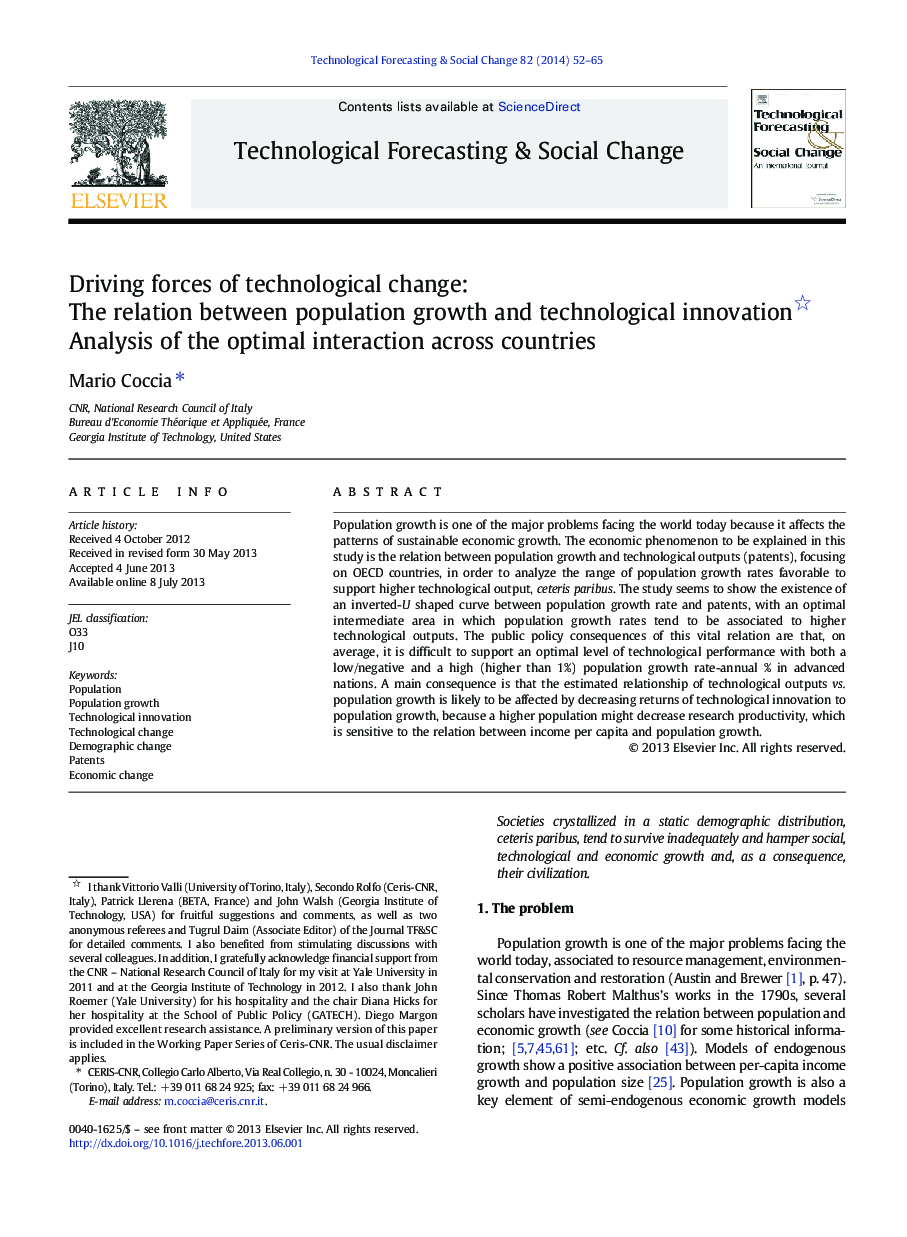| کد مقاله | کد نشریه | سال انتشار | مقاله انگلیسی | نسخه تمام متن |
|---|---|---|---|---|
| 896558 | 1472418 | 2014 | 14 صفحه PDF | دانلود رایگان |
• Population growth rate and technological output tend to have a negative association.
• Estimated patent output vs. population growth rate curve has an “Inverted-U” shape.
• A population growth near 0.25% may drive optimal patent output in OECD countries.
• Technological outputs tend to peak within the 0.21–0.75% population growth range.
• Beyond an optimal population growth ≈ 1%, the innovation output may start to decrease.
Population growth is one of the major problems facing the world today because it affects the patterns of sustainable economic growth. The economic phenomenon to be explained in this study is the relation between population growth and technological outputs (patents), focusing on OECD countries, in order to analyze the range of population growth rates favorable to support higher technological output, ceteris paribus. The study seems to show the existence of an inverted-U shaped curve between population growth rate and patents, with an optimal intermediate area in which population growth rates tend to be associated to higher technological outputs. The public policy consequences of this vital relation are that, on average, it is difficult to support an optimal level of technological performance with both a low/negative and a high (higher than 1%) population growth rate-annual % in advanced nations. A main consequence is that the estimated relationship of technological outputs vs. population growth is likely to be affected by decreasing returns of technological innovation to population growth, because a higher population might decrease research productivity, which is sensitive to the relation between income per capita and population growth.
Journal: Technological Forecasting and Social Change - Volume 82, February 2014, Pages 52–65
